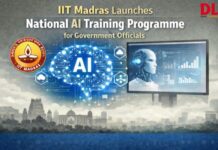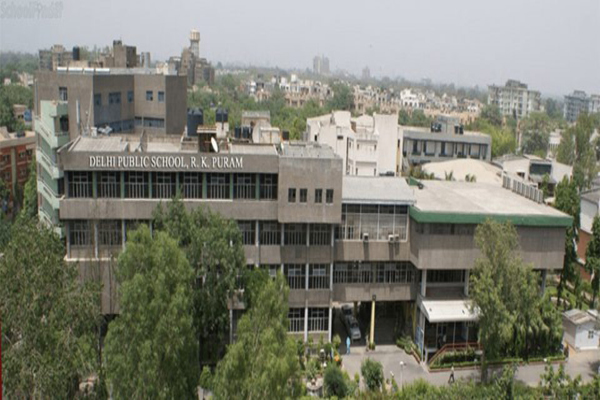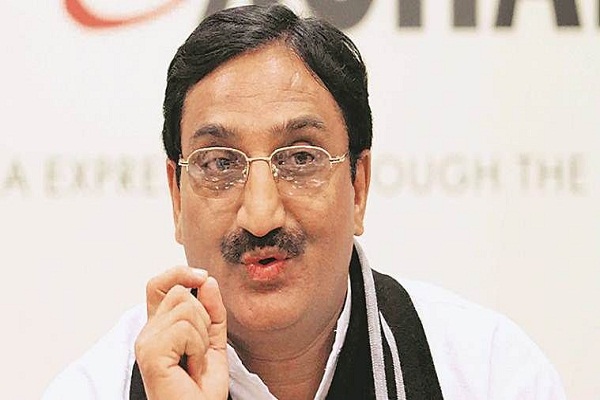Highlights and Impact of Union Budget 2013-14 in Education
Finance Minister, P Chidambaram has announced Union Budget 2013-14, which has received mixed reactions from industry and academia. Here are some highlights of what education received from the budget 2013-14…
Budget Highlights for Education Sector
- Rs 1 lakh crore allotted for enhancing skills of youth
- India to get its first all-women’s bank
- Allocation of Rs 65867 crore to education ministry, up 17%
- Tax Free Bonds – Will allow some organisations to raise funds strictly based on need
- Giving the emphasis on education, Finance Minister P Chidambaram said Budget 2013 will allocate Rs 65,867 crore to the HRD ministry.
- Allocation 100 crores to AMU, BHU, TISS-Guwahati and INTACH
- Allocation Rs 1000 crore to extend skills of youth
- Group insurance schemes to be available for teachers, nurses
- Integrated Child Development’s funds enhanced by 11.7
- Govt announces Rs 2,000-cr fund for scientific innovations
- Grant of Rs 100 crore each for institutions of excellence, says FM
- Clarity on tax issues related to R&D centres in IT soon
- FM gives Rs 100 crore to Tata Institute of Social Science, Guwahati
- Donations to National Children’s Fund will get 100% tax exemption
- Government committed to the creation of Nalanda University as a centre of educational excellence
- Indian Institute of Biotechnology will be set up at Ranchi
- On-campus startup incubators get a boost
|
The budget is meant for ‘inclusive growth and sustainable development’ with a focus on social sectors-health and education. It is very pragmatic budget with feet on the ground. |
 Dilip Chenoy, CEO & MD, National Skill Development Corporation (NSDC) Dilip Chenoy, CEO & MD, National Skill Development Corporation (NSDC)
The Finance Minister’s decision to set aside Rs 1,000 crore for a scheme to encourage youth to voluntarily enrol at skill development institutions and providing an incentive of Rs 10,000 to every individual who undergoes training, coupled with the recognition given to industry-led assessment and certification, would create an aspiration value for skills and contribute significantly to ongoing efforts to ensure that India is in a position to leverage its demographic dividend. Including vocational institutes affiliated to the State Council of Vocational Training in the negative list of service tax would make skills training affordable and more accessible to people, particularly for those living at the bottom of the pyramid. Money being earmarked for skill development as part of the National Rural Livelihood Mission, National Urban Livelihood Mission, Border Area Development Programme Fund and several other funds, moreover, would encourage a larger number of training providers to establish outcome-linked sustainable skill development proposals nationwide. The National Skill Development Corporation (NSDC) would like to compliment the Finance Minister for the government’s continued recognition and commitment to the skills cause in line with its goal of promoting growth that would lead to inclusive and sustainable development. |
Riad Joseph
Tax Partner – Education practice, Ernst & Young
While a 15% increase for RTE is positive, there appear to be no specific announcements on regulatory reform, PPP framework and incentives for private sector
 Ashok Mittal
Ashok Mittal
Chancellor, LPU
This year’s budget promises to bring in a lot of hope for the education sector. It was indeed heartening to see that equal importance has being given to all levels of education starting from primary to higher level. The Sarv Shiksha Abhiyaan and child care primary education deserves to be given more importance and I am glad that this year’s budget has taken cognizance of this fact. The government’s decision to allocate over 65 thousand crore to HRD Ministry and additional 1600 crores to institutions like AIMS sends a clear message that education sector is finally getting the importance it truly deserves. The 17 percent increase in the budget allocation to our sector is appreciated and well received by one and all. However, it was a bit of a disappointment to notice that this year’s budget completely ignored/overlooked the education loans aspect. We are optimistic that this missing factor will be given due importance at least in the next year’s budget.
Premlesh Machama
Managing Director, CareerBuilder India
INR 1,000 Crore allocation to develop job-oriented skills among youth has also been promised and the National Skill Development Corporation will train 5 crore people in current plan period. The FM has announced various incentives for training courses for skill development and also an INR 10000 cash benefit for getting a skill certificate. This will also help in making people more employable
Ambarish Gupta
CEO, Knowlarity Communication Pvt Ltd
On a positive note Budget 2013 has provided more incentive to chip makers by reducing duty on imported machinery needed for manufacturing chips. This is going to boost manufacturing and create more jobs. Also more funds are now available for startups thanks to the initiative taken by the Finance Ministry to recognize certain funding to institutions like IIT as part of CSR activity. This is going to release more funds for startups. Overall this is a growth oriented budget. The finance minister has recognized the importance of creating quality jobs for the youth in India. It has pledged vast sums of money on skill enhancement schemes that will prepare the youth for the next generation of jobs.
Deepak Kaistha
Managing Partner, Planman Consulting
With our finance minister pointing towards the imperative need of foreign investment in India, HR companies are likely to get an increment in terms of more hiring, more work. The budget also hints at increased focus on providing education and skills to youth for securing jobs in the 2013-14. Among this, the focuses will be on enhancing the ability of the undereducated and unskilled to become self-employed and find meaningful work.
Furthermore, with a growth rate of 9 per cent and an outstanding growth in sectors like manufacturing, IT and ITES, textile, agriculture, construction, and retail, there arise tremendous job opportunities. Manufacturing alone is expected to create 25 million jobs in next ten years.
|
The continuation of education cess as 3 percent will only help, if it is utilised for a specific need in education sector. I was hoping the focus to be more on teacher training so the students do not drop out and teachers are motivated to impart better education. The Government needs to introduce technology based learning in government schools. Since, private schools already have technology like smart boards, etc and the government schools cannot afford the same, this will increase the inequality in society. |
|
It is overall a positive budget from the education sector standpoint – despite the expenditure management exercise the government has increased allocation to the education sector by 17 per cent. The education cess of 3 percent has been retained for the financial year 2013-14; this move will continue to promote the public spending in various education schemes like Sarva Shiksha Abhiyan. However, some expectations such as extension of tax sops provided to vocational education in agri sector to other streams of vocational education have not been met but nevertheless the budget of 2013-14 should provide a boost to the education sector and the overall economy largely due to serious measures to promote saving and investments in the economy. |
|
From the perspective of education and developing talent, it is very encouraging to see the commitment (financial and in principle) reflected in the budget. There is a clear case of investing significantly in building skills across the nation and the budget with its near 20% increase (from last year) for MHRD allocation and other proposals for RTE, medical education & research, or SSA has its heart in the right place for the matter. I believe a similar trend and focus on developing talent through training and education would percolate to corporate India. We see an increase in spend in training, skills development and overall talent management in organisations across scale and domains. For education, its a very good budget and just in time. |
 Shantanu Prakash
Shantanu Prakash
CMD, Educomp Solutions
The tonality of the budget as far as the education sector goes was highly positive. The thematic emphasis on employability and therefore on skill and vocational training led education is a trend shift for certain. In fact the unqualified acceptance by the Government of the criticality of job-led education and the emphasis on vocational training and skilling is the corner stone of this budget. We will look forward to the fine print matching the fine sentiments going ahead. The absence of any encouragement for much needed private investment in the education sector was a bit disappointing.
 Sanjaya Sharma Sanjaya SharmaCEO, TATA Interactive Systems “The Union Budget 2013 looks very positive for the education sector, a prerequisite for any country’s growth and development. The Government’s allocation of Rs. 65,867 crore for the overall education sector and another one of Rs. 3,983 crore specifically for the primary education segment are indeed encouraging steps. Its allocation of Rs. 13,215 crore for Mid Day Meals in schools and the Rs. 17,700 crore for Integrated Child Development Services are other positive steps to achieve 100% literacy. I also reiterate that there is a need for a PPP model in the sector not just to execute the delivery but also deploy modern technology infrastructure across schools enabling rapid proliferation of world-class education. Another positive announcement was the Rs. 1000 crore allocation for the national skill development fund. Every sector in India is challenged with severe crunch of skilled workforce and such initiatives will help achieve its target of skilling 50 million people in the 12th Plan period, including 9 million in 2013-14. But, the gap is also widening at the same time and there will be a need for around 50 crore skilled workers across sectors in India by 2022. The Govt & NSDC in particular should look at employing technology as a strategic partner to fast track and bridge this gap”. |
 Prashant Bhalla Prashant BhallaSenior Vice President, Manav Rachna International University “Keeping the current fiscal deficit scenario in mind, the budget this year appears to be a move towards a focused economic growth, provided the elements are well implemented. It is good to see that education has retained its importance where the government plans to continue taking initiatives for education as well as imparting skills to the youth. Given the challenges we have, rise in expenditures at all levels is obvious but one should not divert from our focus and continue our efforts. Rise in allocations for HRD, SSA, RMSA seems to be a move that will bring benefits to the countrymen. Having said that, monitoring also needs equal attention to overcome obstacles and thereafter succeed in our missions. It is a delight to see that government has taken initiatives for women like announcing Nirbhaya fund, taking steps for women upliftment which is equally a pulsating concern today and is important for achieving an inclusive growth.” |







 S S Mantha
S S Mantha Pramod Sharma
Pramod Sharma Ramana Akula
Ramana Akula Amit Gautam
Amit Gautam
 Bangalore: Bhargav Cavale and Abhishek Krishna from Sri Kumaran’s CBSE School, Bangalore won the top honours at the National Finals of the 10th Texas Instruments Science & Technology Quiz, 2013. Don Bosco Park Circus, Kolkata and Amity International School, Delhi settled for second and third places respectively. Dr Biswadip (Bobby) Mitra, President & Managing Director, Texas Instruments India presented the prizes to the winning teams.
Bangalore: Bhargav Cavale and Abhishek Krishna from Sri Kumaran’s CBSE School, Bangalore won the top honours at the National Finals of the 10th Texas Instruments Science & Technology Quiz, 2013. Don Bosco Park Circus, Kolkata and Amity International School, Delhi settled for second and third places respectively. Dr Biswadip (Bobby) Mitra, President & Managing Director, Texas Instruments India presented the prizes to the winning teams.
 New Delhi: Simmtronics semiconductors Ltd has launched new 10.1 inch tablet in India the XPAD X-1010. The Android 4.0 ICS based Simmtronics XPad X1010 features 10.1 inch display & 1.2 GHz – A8 cortex processor.
New Delhi: Simmtronics semiconductors Ltd has launched new 10.1 inch tablet in India the XPAD X-1010. The Android 4.0 ICS based Simmtronics XPad X1010 features 10.1 inch display & 1.2 GHz – A8 cortex processor.
 Brighton (UK): Leading global online information service provider—Eldis—has re-launched its International Development research portal www.eldis.org after a thorough overhaul of the website.
Brighton (UK): Leading global online information service provider—Eldis—has re-launched its International Development research portal www.eldis.org after a thorough overhaul of the website.
 Mumbai: The Indian Institute of Technology-Bombay (IIT-B) and French nuclear energy company Areva SA have inked an agreement for collaboration in research and development projects.
Mumbai: The Indian Institute of Technology-Bombay (IIT-B) and French nuclear energy company Areva SA have inked an agreement for collaboration in research and development projects.
 New Delhi: Greater Noida-based Galgotias University has introduced Preparatory English Program for International Students to serve as an academic bridge in Computers, Mathematics and Basic Sciences between the students’ current qualification and those required for the commencement of their undergraduate studies at GU.
New Delhi: Greater Noida-based Galgotias University has introduced Preparatory English Program for International Students to serve as an academic bridge in Computers, Mathematics and Basic Sciences between the students’ current qualification and those required for the commencement of their undergraduate studies at GU.
 New Delhi: Higher education sector in India will continue to reel under crisis of capable leaders till 2020, a global survey conducted by the Education Promotion Society for India (EPSI) said.
New Delhi: Higher education sector in India will continue to reel under crisis of capable leaders till 2020, a global survey conducted by the Education Promotion Society for India (EPSI) said.
 Mumbai: Pearson Schools has introduced Power School, a web-based student information system, in eight of its schools.
Mumbai: Pearson Schools has introduced Power School, a web-based student information system, in eight of its schools.
 New Delhi: The Union budget will have a special fund provision for the upcoming Nalanda University in Bihar, External Affairs Minister Salman Khurshid said.
New Delhi: The Union budget will have a special fund provision for the upcoming Nalanda University in Bihar, External Affairs Minister Salman Khurshid said.
 Bangalore: Indian Institute of Management Bangalore (IIMB) and Pearson has announced their intention to jointly publish a range of titles covering business scholarship and collaborate in the field of management education.
Bangalore: Indian Institute of Management Bangalore (IIMB) and Pearson has announced their intention to jointly publish a range of titles covering business scholarship and collaborate in the field of management education.











